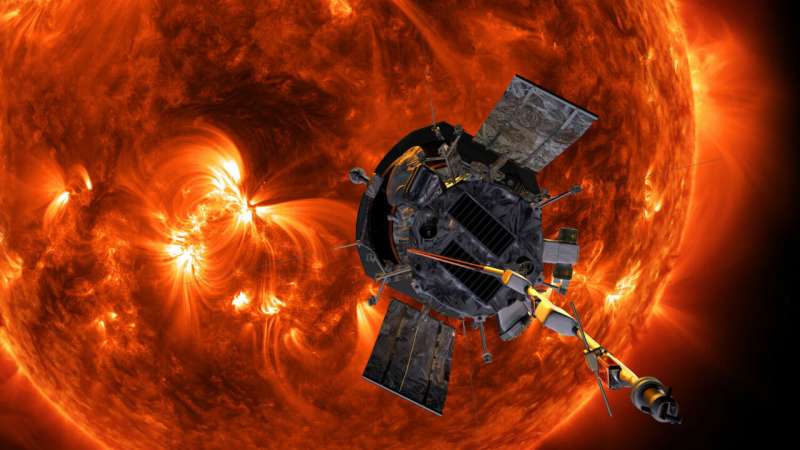This phenomenon, while rarely imaged, is thought to occur regularly at the interface of fluid flows when the right conditions arise.
"We never anticipated that KHI structures could develop to large enough scales to be imaged in visible light CME images in the heliosphere when we designed the instrument," said Angelos Vourlidas, Ph.D., JHUAPL and WISPR Project Scientist.
"These fine detail observations show the power of the WISPR high sensitivity detector combined with the close-up vantage point afforded by Parker Solar Probe's unique sun-encounter orbit," said Mark Linton, Ph.D., head of NRL Heliophysics Theory and Modeling Section and Principal Investigator for the WISPR instrument.
The keen eye of an early career member of the WISPR team, Evangelos Paouris, Ph.D., George Mason University detected the KHI structures. Paouris and his WISPR colleagues undertook a thorough investigation to verify that the structures were indeed KHI waves. The results not only report an extremely rare phenomenon, even on Earth but also open a new window of investigation with important consequences for the civilian and Department of Defense (DOD) communities.
"The turbulence that gives rise to KHI plays a fundamental role in regulating the dynamics of CMEs flowing through the ambient solar wind. Hence, understanding turbulence is key in achieving a deeper understanding of CME evolution and kinematics," said Paris. By extension, this knowledge will lead to more accurate forecasting of the arrival of CMEs in Earth's vicinity and their effects on civilian and DOD space assets, thus safeguarding society and the warfighter.
"The direct imaging of extraordinary ephemeral phenomena like KHI with WISPR/PSP is a discovery that opens a new window to understand better CME propagation and their interaction with the ambient solar wind," Paouris said.
WISPR is the only imaging instrument aboard the NASA Parker Solar Probe mission. The instrument, designed, developed, and led by NRL, records visible-light images of the solar corona and solar outflow in two overlapping cameras that together observe more than 100 degrees angular width from the sun.
This NASA mission travels closer to the sun than any other mission. PSP uses a series of Venus flybys to gradually reduce its perihelion from 36 solar radii in 2018 to 9.5 in 2025. The mission is approaching its 19th perihelion on March 30, 2024, at a distance of 11.5 solar radii from the sun's center.
By observing the data the team found the Kelvin-Helmholtz instability is excited at the boundary between the CME and the ambient wind, as the two are flowing at distinctly different velocities. The resulting vortex-like structures are analyzed with respect to what the Kelvin-Helmholtz instability predicts, and inferences are presented about what the local magnetic field strength and density must be to allow such instability in this environment.
More information: Evangelos Paouris et al, First Direct Imaging of a Kelvin–Helmholtz Instability by PSP/WISPR, The Astrophysical Journal (2024). DOI: 10.3847/1538-4357/ad2208
Journal information:Astrophysical Journal
Provided by Naval Research Laboratory



